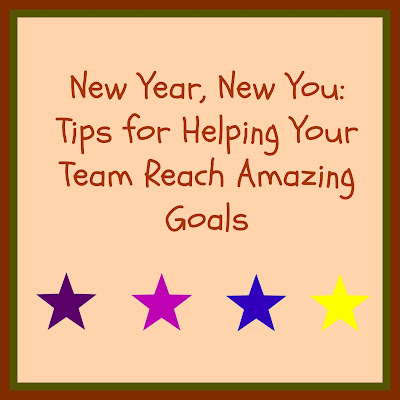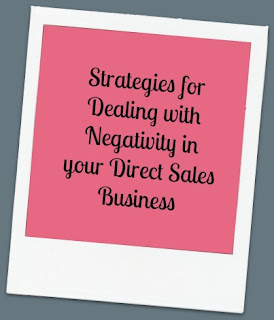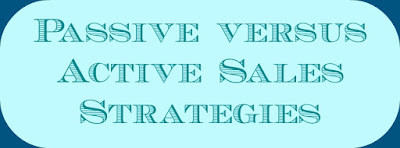This week I’m specifically talking to my leaders, my Ninja Coaches, people who excel at a particular skill or activity (i.e., coaching their direct sales team).
I resolve to…
- Lose 50 pounds.
- Save $1,000.
- Increase my customer base by 200 people.
- Get a beach body by going to the gym every day.
As we know, January is a time
for resolutions. It’s a “new day,” a New Year even, and people are out there
making these wild predictions. As a psychologist (and a watcher of people in
general), I always wondered why. Why now. Why not, like, oh, I don’t know, last
week. I’ve talked to a lot of new direct sellers who signed on in December who
said they were going to wait until January to start their businesses.
I don’t get it.
Start now. Like NOW. Go. Now.
Bye. GO.
BUT here’s what I do get. A new
year is almost like a new “slate” – it’s an opportunity for you to make a goal
and have a start date (January 1) and we all know that goals need start dates.
And assessment dates (because we have to assess progress and make changes). And
end dates (or why would we have the #EOMHustle right?!).
As a leader, you can do this
too.
Take an honest look at yourself
last year as a leader and a coach for your team. What did you do? What didn’t
you do that maybe you should have? Where did you focus the most of your time?
- Leading by example? (This is huge by the way, and it IS part of coaching).
- One on one coaching calls?
- Pop up/party prep coaching?
- Stroking egos of team members who are feeling down about their business?
- Social media posting?
- Putting out fires?
- Telling people where to find shit that they should know how to find themselves?
- Sending out team incentives?
- Creating and managing team incentives?
Be honest with yourself. Write
down what you spent your time doing last year (or at least for the last two
quarters because we know November and December are cray-cray and not normal).
Now the next question. And it’s
a hard one.
Did what you were doing get you where you wanted your team to be?
*Pause*
Clears
throat.
Now, if it did? Fantastic!
Fabulous! Do more of THAT!
If it didn’t…let’s assess.
Think about your ROI (return on
investment). If you spend 10 hours per week posting to your team Facebook page
and nobody is working…something ain’t working. If you spend 10 hours per week
trying to get your team on the phone for one-on-ones, and they aren’t calling
you back or scheduling a time…something ain’t working.
Side Bar…
I have heard leaders from
different companies say, “People just don’t want to work!” So wait…your team
member shelled out $99/$175/$50 for…what? A kit? Maybe but probably not. Team
members typically don’t work their biz for two reasons: 1) they don’t know how
to, and/or 2) they can’t find the time to work it into their already busy
schedule.
Remember that whole resolution
bit I talked about at the beginning? THEY resolved to start a thriving business
in [enter start date here] and…nothing. Maybe they didn’t do the 60-day
trainings, maybe they didn’t know how to, maybe they got caught up in life. For
whatever reason, they had a dream, an idea, and it came in a box (all kits come
in boxes right…?). And right now it’s on the back burner. It’s fizzling. (And
by the way, they probably blame their network for not supporting them or the
company for not helping them because humans are typically loathe to take the
blame for something themselves).
So if you’re feeling frustrated
with your team not working, if you have $0s on your team, think about those two
things. Do they have the tools to be successful? If so, do they have the time?
Something else to think about – sales is like addictive substances. And we all
know this. Once you get a sale, you want another one. So if you have lifetime
$0s on your team, their goal (in your mind at least) should be 1 sale. Get that
1 sale. Get it done, get it over with, log in to your dashboard and see a sale
and get The Bug. If a team member says they’re too busy (and cheers to you for
getting them on the phone or getting them to text back by the way), then coach
them to that one sale. If it happens like we’ve seen it happen, The Bug will
bring them back to you for help with time management. I have even told team
members to copy my social media posts if that’s what it takes to push them into
“drive.”
Because sometimes they’re not
creative (or they don’t think they are).
Sometimes they are shy or don’t
want to harass their network.
This is where our jobs, as leaders,
comes in to remind them that they ARE creative in their own way, and that they
AREN’T harassing their network if they truly love their product. And that’s the
massaging egos part of our job.
Side Bar Over.
OK so back to work on you and
your team. Some questions for you.
How much time did you spend
planning? Planning your own personal business month,
planning your social media posts to your team, planning your emails to your
team, your texts to your team, scheduling your days when you will do one-on-ones
(if you’re doing them haphazardly and whenever you can, I REALLY suggest you
create office hours and do them then consistently and do an outside touch base
with a team member only if they aren’t available during your office hours).
Work your business (of coaching) like a business. We open at X and we close at
Y (although good luck with that closing at Y bit, team members will text you at
all hours sometimes). Hell, even plan to plan. I plan on Sunday nights. Every
week. Here’s what I’m going to do and on what days. Team Member Jane has a
party on Tuesday so I need to call her Monday and do a walk through (and remind
her of that constant calendar). Write these things down. Don’t have a planner
(or use your phone calendar or Google Calendar)? My gosh are you kidding me?
How do you stay sane and organized? Do you? Git’r done.
What does your team snapshot
for the last 6 months look like? Who’s consistent? Who are your
rock stars? Who’s inconsistent? Who seems to have lost interest? Now, some
silly questions. Where do you make the most money? Rock stars (and consistent
rock stars are like whoa I love you). Are your rock stars self-sufficient? What
do they need from you? A “good job” every once in a while? A shout out on a
corporate Facebook post? Now look at your lower-level team members. I break
them down into consistently over $1k, $500-$999, and under $500 (and then the
lifetime $0s). Push all your consistent ladies to go just a LITTLE higher every
month. In your monthly planning, look at their sales average for the last 4
months (don’t count November and December), add on some bucks, and talk to them
about their goal (with your goal for them in mind). No comfort zones ladies –
push them outside.
Do you track your team? I use
an Excel spreadsheet and created tabs for overall sales (so there’s a new
column every month with their sales from Dec-15 etc.), contact info (in case my
phone dies a painful death), and then there’s a tab for “focus.” Sally hasn’t
had a sale in 2 months. She’s on my January list. Rhonda hasn’t responded to my
Facebook posts or emails for a few weeks, what’s up with that – she’s on my
January list. So the focus tab is a work in progress and is based upon the
overall sales tab. I also track their pop ups/parties in a calendar and contact
them 2 weeks, 1 week, 2 days before, and 2 days after to talk about the
different things that need to be done (especially initially – veteran team
members are like ya ya I know – and as long as they do it, I’ll leave ‘em
alone).
Do you break the goals down
into bite-sized bits with your team? Team goal is $50k. 50 team
members. $1k/team member. 4 weeks in the month, $250/week per team member.
Average party is X, that means we need XYZ numbers of parties to reach our
goal. Be sure to add in a cushion of a certain number of parties that will be
$0 or get cancelled. I even break it down into daily goals sometimes
(especially if there’s a promo going on like a sale – “Today we want to do $50
each – that’s 2 $25 sales or 5 $10 sales”). Think about that. Every single team
member has a goal of 2 $25 sales today. That is a) easy, but b) forgettable
(“I’ll just do it after I get out of work” NOT). So just like I drink 20 oz of
water before I can have my morning coffee (so I can reach my water goal for the
day), we need to coach them to work the sales early rather than late. “Get your
goal met by breakfast and then maybe, heck, double it and feel awesome for the
rest of the day…”
And last of all (because this
is a long post), Do you have a growth mindset? Are you encouraging your team to
recruit/find their +1/whatever your company does? Most well-thought-out
recruits do wayyyy better than a random who joined off the website. Are you, in
your head, increasing your monthly sales goal by $1k or so per month? Are you
helping your team members grow as business people who new business knowledge
and suggestions? Are you growing your own business?
 |
| You're still reading! High five! |
Let’s close this out because
I’m on page 8 and that’s just crazy. So your team didn’t do as well as you’d
hoped last year. Or they did and you want them to do even better (growth
mindset). Here are the Cliff Notes:
- Planning.
- Intentional contact with team members to encourage goal setting and reaching.
- Track and break down goals.
- Think in terms of growth.
Now do two things – first, pat
yourself on the back for reading all of this, and second, high five. You got
this. Now go be MORE awesome. How are you planning to be more awesome? Comment
below and let me know!
Do you find my posts
useful? If so, sign up to receive emails in your in box whenever I post – on
the right put in your email under Follow By Email! Also, sharing is caring –
share my posts with other direct sellers you know so they can check it out!
Join the Direct Sales Mavens Facebook Community here and let’s help each
other achieve our goals!





